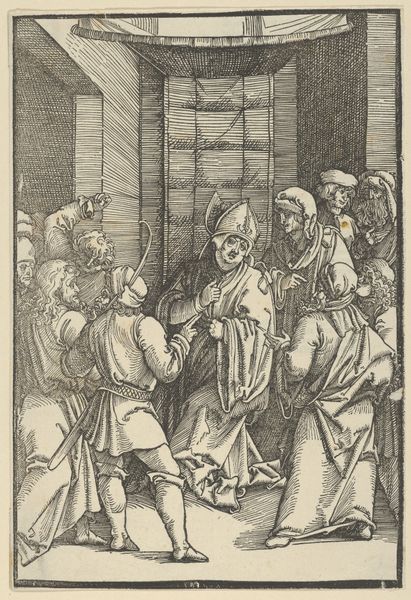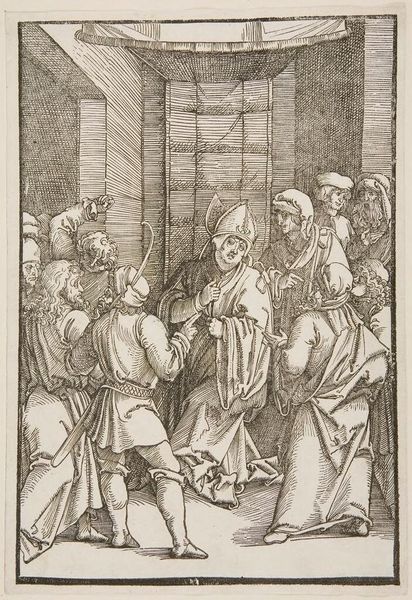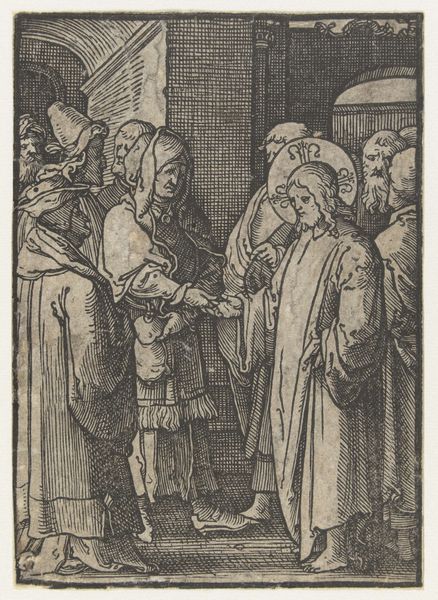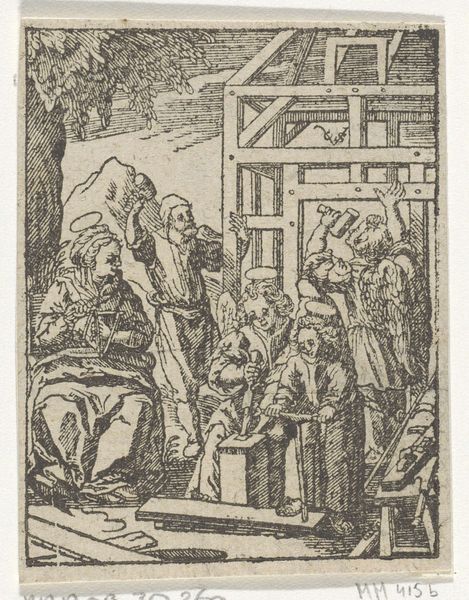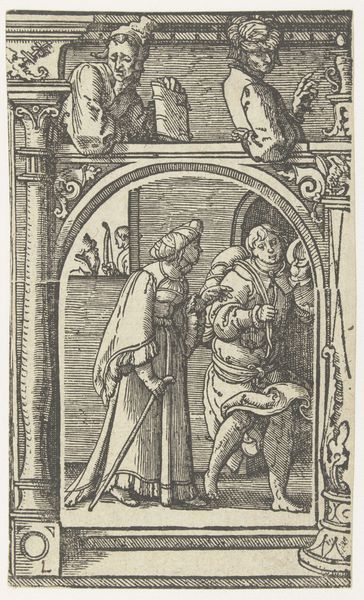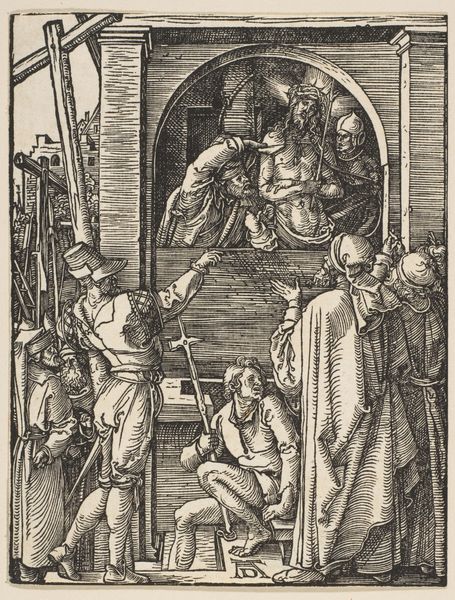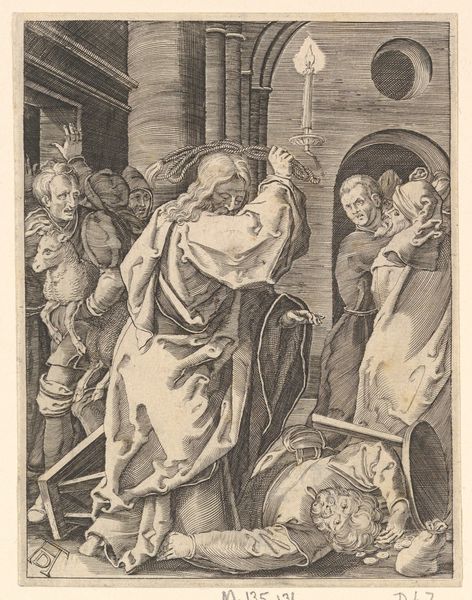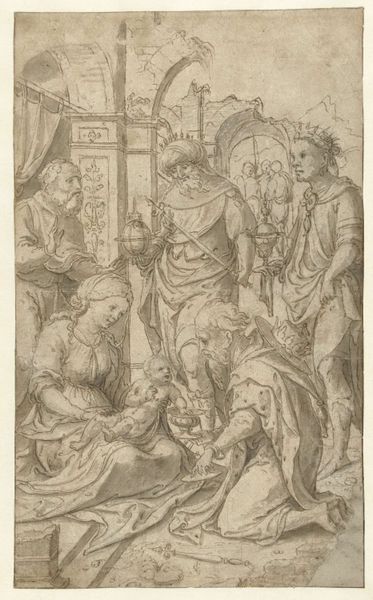
print, intaglio, engraving
#
narrative-art
# print
#
intaglio
#
figuration
#
history-painting
#
northern-renaissance
#
engraving
Dimensions: height 111 mm, width 80 mm
Copyright: Rijks Museum: Open Domain
Editor: This is "Christ Threatened with Stoning," an engraving by Lucas van Leyden, made around 1518 to 1522. The density of figures and their elaborate costumes is immediately striking. It seems to suggest a sort of claustrophobia or tension within the composition. What elements stand out to you most in terms of its formal qualities? Curator: Note the expert deployment of line—observe its variation in thickness and direction. Line is fundamental in engraving, where it is the literal and primary method through which an image can appear. Here the formal structure builds upon hatched and cross-hatched lines. The skillful use of cross-hatching allows the artist to create nuanced tonal modulations that provide the illusion of three-dimensionality on a two-dimensional surface. The relative distribution of light and shadow within the space indicates the spatial relationship between figures, and so provides insight into the dramatic narrative, doesn't it? Editor: It does! It’s interesting how the light seems to illuminate Christ, while darkness enshrouds the figures poised to stone him. Does that contrast contribute to the work's meaning? Curator: Precisely! This visual arrangement emphasizes a duality, pitting lightness against darkness. As such, consider how the structural composition and contrast, the materiality and lines used within the engraving, all come together to articulate an allegory of light and darkness within the human experience, a testament to our collective morality. The meaning inheres in the visual. Editor: This focus on structure makes me think about all of art history in a new way. Thanks! Curator: Indeed, exploring form in art lets us appreciate it anew!
Comments
No comments
Be the first to comment and join the conversation on the ultimate creative platform.

